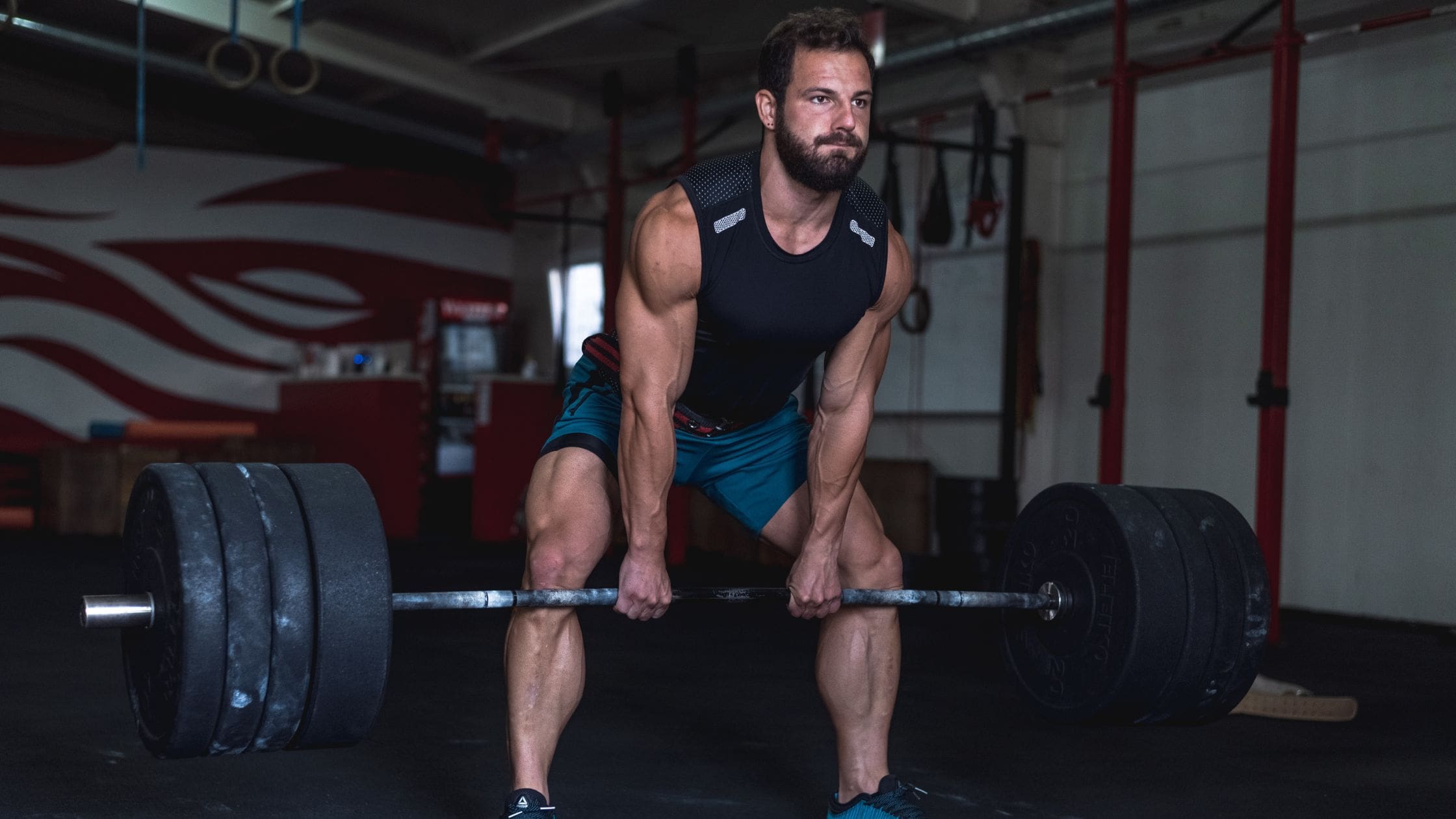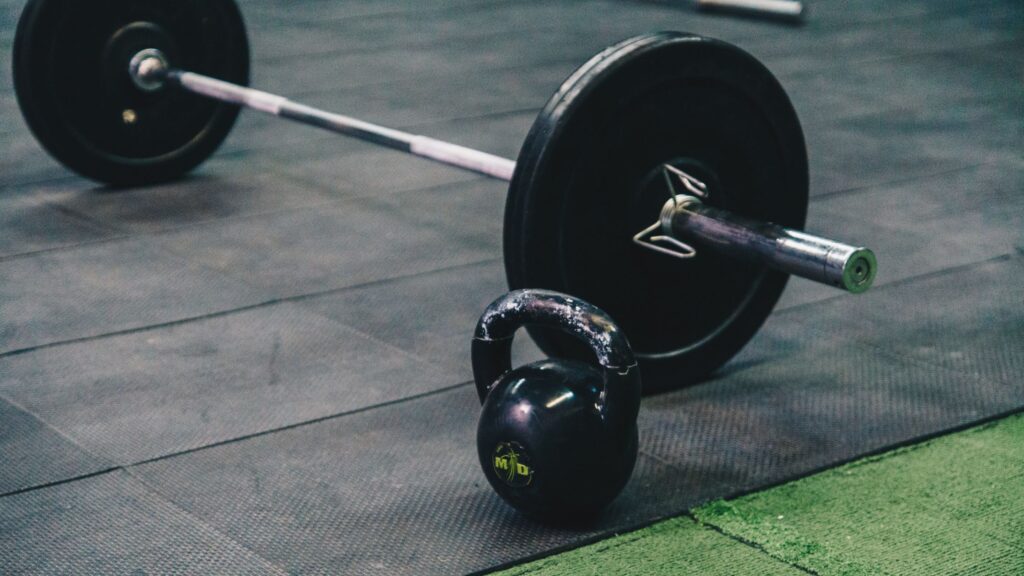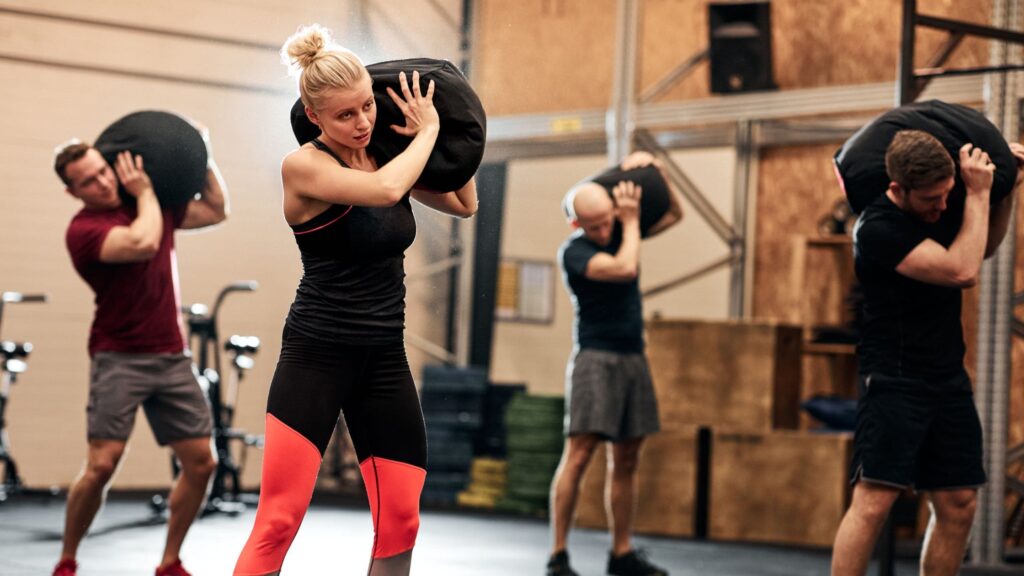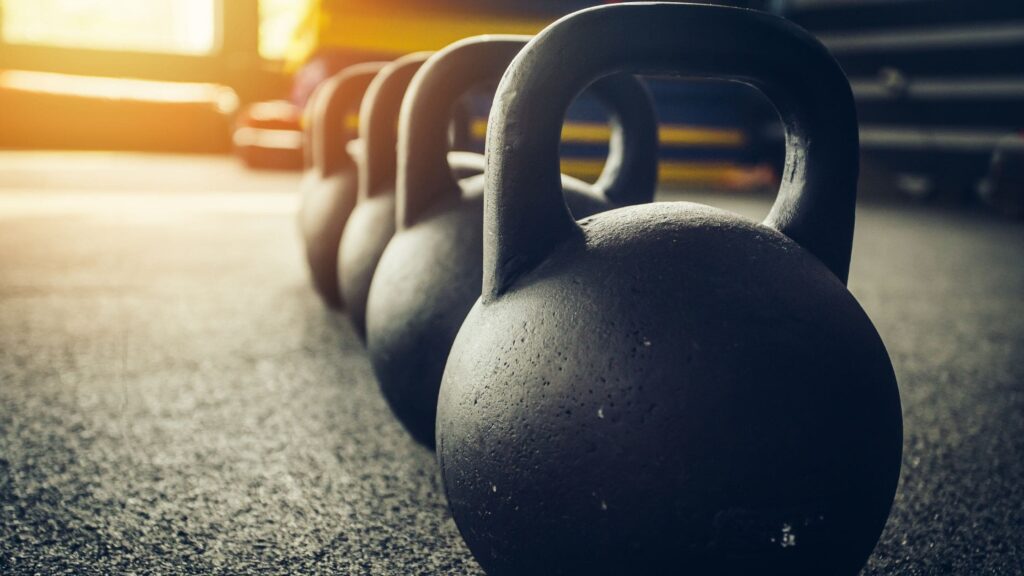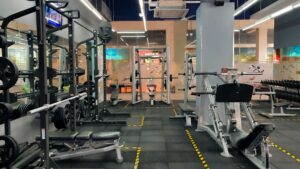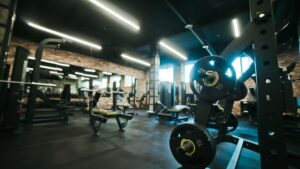We all know the gym can be full of gear, kettlebells, weight plates, sandbags, even tires, but what really sets free weights apart is the control you have over every movement.
This means your muscles and stabilizers get to work harder than on machines. If you’re new to this, especially if you’re a woman or identify outside traditional gender lines, free weights might feel a little intimidating at first.
But once you get the hang of the basics, you’ll find yourself feeling stronger, more confident, and ready to crush your fitness goals.
Remember, a simple dynamic warm-up and clear goals, whether it’s building strength, muscle size, endurance, or rehabbing, are key to safe progress.
Health experts like the CDC say strength training twice a week helps keep your body fit for life. And when you’re ready to invest in equipment, make sure to pick quality gear from trusted suppliers to keep your workouts safe and effective.
We hope this article gives you the confidence and info you need to take charge of your fitness journey with free weights!
What are Free Weights?
Free weights include dumbbells, barbells, kettlebells, weight plates, medicine balls, sandbags, and heavy tires. These are distinct from weight machines because they are not fixed to cables or tracks.
You can pick them up, change direction freely, and work solely against gravity, which makes them “free.” This freedom requires your body to stabilize and control the movement, engaging multiple muscle groups and stabilizer muscles beyond the targeted area.
In contrast, weight machines like the shoulder press machine or leg press often guide the motion along a set path. Sometimes, machines rely on resistance types other than gravity, such as elastic bands or cable tension, which can limit carry-over to everyday activities or sports.
For example, when using a leg press machine, the hardware controls the motion, reducing the demand on your stabilizers.
Using free weights means the path of movement is dictated by you, which increases muscle activation and coordination. This difference is why free weights are highly valued for strength training, helping improve body control, balance, and real-world functional strength.
Whether you’re working on a barbell squat or lifting dumbbells, free weights challenge your core and entire body to maintain proper form and stability, unlike many machines that reduce this demand.
What Are Different Types of Free Weights?
When you start exploring weight training equipment, understanding the different types of free weights is essential to build a workout routine that fits your fitness goals and space.
Free weights are versatile tools that allow you to work multiple muscle groups, improve your body strength, and engage stabilizer muscles naturally during movements.
Compared to weight machines, free weights require you to control the path and balance, which boosts muscle activation and helps develop functional fitness.
Dumbbells
Dumbbells are handheld weights, usually shaped like small bars with weighted ends. They come in fixed or adjustable forms. Dumbbells are excellent for beginners and experienced lifters alike, as they allow a wide range of free weight exercises targeting arms, shoulders, chest, and core.
You can perform bicep curls, dumbbell shoulder presses, and lunges with them, which promote muscle growth and balance. Adjustable dumbbells are perfect for home gyms where space is limited since one pair replaces multiple fixed weights.
Barbells
Barbells are long bars designed to hold weight plates on each end. Full-size Olympic barbells typically weigh 20 kg (44 lb) and accept plates that can add several hundred kilos.
Barbells enable compound movements like the bench press, barbell squat, and deadlifts, which engage large muscle groups such as quads, hamstrings, glutes, and back. Using barbells helps develop total body strength and is common in many strength training programs. Proper form is crucial to avoid injury, especially with heavy loads.
Kettlebells
Kettlebells are cast-iron or steel weights with a handle on top. Their unique shape allows for dynamic movements like swings, cleans, and snatches that combine strength training with cardio.
Kettlebell workouts improve core stability, grip strength, and endurance. They also help develop power and coordination due to the shifting load during exercises. Beginners should start with lighter weights to master the movement patterns before progressing.
Weight Plates
Weight plates are flat discs that attach to barbells or can be used individually for exercises. Plates come in various sizes and materials, from rubber-coated to iron. They allow progressive overload by increasing resistance in small increments.
You can also use plates for exercises like plate presses or Russian twists. Weight plates contribute to muscle mass development by enabling gradual load increases.
Medicine Balls
Medicine balls are weighted balls used for explosive movements, rotational exercises, and rehab. They vary in size and weight and are useful for improving power, agility, and core strength.
Medicine ball throws and slams activate muscles in the arms, shoulders, and trunk. Unlike traditional free weights, they challenge your body with multidirectional resistance and dynamic movement patterns.
Sandbags and Odd Objects
Sandbags and other “odd objects” such as tires add unpredictability to your workouts. The shifting load forces your core and stabilizer muscles to engage more intensely. Sandbag training improves grip strength, balance, and real-world functional fitness. These tools are popular in strongman training and for conditioning athletes who want to build practical strength beyond typical gym movements.
Strongman Logs and Thick-Handled Axles
Used in competitive strength sports, strongman logs are large wooden or metal cylinders with handles.
Thick-handled axles increase grip difficulty compared to regular barbells. These tools train explosive strength, grip endurance, and overall power. They are specialized equipment for advanced lifters and athletes focused on sport-specific training.
Adjustable and Selectorised Free Weights
Space-saving adjustable dumbbells and selectorised blocks allow users to change weight quickly without needing a full rack.
These are ideal for home gyms or anyone looking to maximize room and reduce clutter. They cover a broad range of loads, supporting progression from beginner to advanced levels without buying multiple sets.
How to Choose the Right Free Weights for Your Goals?
When selecting weights, you want a load that makes 12 to 15 repetitions challenging but doable. If the reps feel too easy, the weight is too light; if you can’t complete the set with proper form, it’s too heavy. This balance ensures effective strength training without risking injury or poor technique.
Progressive overload is essential to build muscle mass and body strength over time. Look for weight training equipment that allows micro-increments—such as 2 kg or 5 lb jumps—so you can increase resistance gradually without stalling your progress. This feature is especially useful for free weights like plates or dumbbells, as it helps you fine-tune your load and maintain consistent muscle activation.
For those with limited space or a tight budget, adjustable kettlebells or selectorised dumbbells are excellent choices. These products combine multiple weight options into a single piece of equipment, replacing an entire rack.
They’re perfect for apartment dwellers or home gym setups, allowing you to perform a variety of free weight exercises targeting different muscle groups without clutter.
If time is a constraint, plan your workouts to last between 45 and 60 minutes. This duration is the sweet spot recommended by many trainers and fitness organizations, including the American Council on Exercise.
It provides enough time to complete a quality workout routine focusing on strength, hypertrophy, or endurance while reducing fatigue-related form breakdown and injury risk.
When comparing free weights vs machines or smith machine options, free weights offer greater freedom of movement and engage stabilizer muscles more effectively. This means your body, including core and smaller muscle groups, works harder to maintain proper form and control.
What are the Benefits of Using Free Weights?
Using free weights offers many physiological and practical advantages that can enhance your strength training routine and overall fitness.
One key benefit is how free-weight sets elevate your heart rate and increase blood flow. This boost improves nutrient delivery to your working muscles, helping you sustain energy and recover faster.
Research shows that regular free-weight training lowers the risk of cardiovascular events, including heart attacks and strokes.
This makes strength training with free weights a valuable addition to your long-term health plan, alongside aerobic activities.
Another major advantage is the increase in lean muscle mass. Muscle gained through free weights raises your resting energy expenditure, which supports fat loss even when you’re not exercising. This effect makes free weights highly effective for improving body composition.
Additionally, consistent strength training with free weights often leads to better sleep quality. Improved rest enhances recovery, allowing you to perform better in future workouts.
Provide Greater Range of Motion
One of the main reasons free weights stand out is their ability to allow a natural, unrestricted range of motion (ROM). Unlike many weight machines that force your joints to move along a fixed track, free weights let your ankles, knees, hips, and shoulders follow their own safe path. This freedom reduces joint strain and respects your body’s individual movement patterns.
Allowing greater ROM not only improves flexibility but also supports joint health over time. By moving freely through different planes, you encourage balanced muscle development and reduce the risk of injury often associated with rigid machine movements.
Increase Muscle Activation
Free weight exercises demand more from your stabilizer muscles compared to machines. For example, a dumbbell shoulder press activates the core, traps, and triceps, muscle groups that remain mostly inactive during a shoulder press machine workout. This broader muscle activation improves overall body strength and balance.
Because more muscle tissue is engaged simultaneously, trainers note higher calorie burn per set when using free weights. This increased energy expenditure supports fat loss and muscle growth more effectively than many isolated machine exercises.
Improve Functional Strength and Balance
Free weights excel at developing functional strength that transfers directly to everyday activities. Unlike machines, free weights require you to control the path of movement, which improves coordination and engages multiple muscle groups simultaneously. This demands your core and stabilizer muscles to work harder, enhancing overall body stability and balance.
Real-life tasks like moving furniture or carrying groceries rarely follow a fixed, predictable path. Free weight exercises mimic these unpredictable movement patterns, training your body to respond effectively. This makes strength gained through free weights more practical and applicable to daily life.
By regularly using free weights, you improve proprioception, your body’s awareness of position in space, which lowers injury risk and enhances athletic performance. This improved balance and control benefit beginners and experienced lifters alike as they progress through their fitness journey.
Versatility and Exercise Variety
One of the biggest advantages of free weights is their unmatched versatility. With a single adjustable dumbbell, you can perform hundreds of weight exercises targeting nearly every muscle group. This variety prevents workout boredom and allows you to modify exercises according to your fitness goals and level.
Free weights support both bilateral and unilateral movements, exposing muscle imbalances that machines may mask. For example, dumbbell bicep curls or lunges force each side of your body to work independently, improving balance and symmetry.
This adaptability means you can design workout routines that address strength, hypertrophy, endurance, or rehabilitation.
Customization and Progression
Customizing your load and progressing safely is easier with free weights than many weight training machines. Fractional plates, as small as 0.5 kg, allow for micro-increments in resistance, helping you avoid large jumps that might stall progress or increase injury risk.
This ability to fine-tune the weight fits various fitness levels—from beginners gradually increasing muscle mass to advanced lifters aiming for peak strength. You can adjust resistance to match your goals, whether for muscle growth, endurance, or sports performance.
Cost and Accessibility
Free weights are often more budget-friendly than many other types of weight training equipment, especially when compared to machines or smith machine setups. For home use, they offer excellent space efficiency since items like dumbbells, kettlebells, and weight plates can be stored compactly without needing large, fixed machines.
Another advantage is their durability. Iron plates and solid dumbbells typically outlast commercial gym memberships and require minimal maintenance. This longevity makes free weights a smart investment for your fitness journey. Whether you’re setting up a small home gym or supplementing workouts at a commercial facility, free weights offer reliable, long-lasting value.
Mental Engagement and Focus
Using free weights demands your full attention to maintain proper form and body control. Unlike weight machines that guide your movement, free weights require you to stabilize the load, engaging your core and multiple muscle groups. This increased mental effort enhances mind-muscle connection, which is essential for effective strength training.
This cognitive engagement can improve workout enjoyment and adherence, helping you stay motivated over time. Trainers and fitness articles often highlight that this mental focus helps lifters develop better technique, reduce injury risk, and gain more from each session.
Are Free Weights Good for Weight Loss?
Yes, free weights are an effective tool for weight loss, especially when combined with a balanced workout routine. Strength training with free weights helps preserve lean muscle mass while dieting, which is crucial to maintaining a healthy metabolism. This counters the common plateau seen with pure-cardio routines, where muscle loss can slow fat loss progress.
Free weight exercises raise your heart rate and increase calorie burn during and after your workout due to excess post-exercise oxygen consumption. By building muscle mass, you also boost your resting energy expenditure, meaning your body burns more calories even at rest.
What are the Risks of Free Weights?
Losing balance is a common issue, especially for beginners, and can lead to dropping weights or injury. It’s important to start with lighter loads and focus on control before increasing resistance.
Holding your breath during lifts, a technique known as the Valsalva maneuver, can spike blood pressure and increase the risk of hernias. Coaches emphasize proper breathing to avoid this problem, ensuring you exhale during exertion phases.
Momentum swings can shift effort away from muscles to joints, raising injury risk. This often happens when lifters use weights that are too heavy or rush through repetitions, compromising form and stabilization.
Injury Risk from Poor Form
Improper technique is a leading cause of injury with free weight exercises. Common mistakes include knees caving inward during squats, a rounded back during deadlifts, and hyperextended elbows on overhead presses. These faulty movement patterns place undue stress on joints and soft tissues, increasing the chance of strains or chronic injuries.
Maintaining proper form is crucial. Early intervention by trainers or use of video feedback can help correct these errors. Learning correct technique protects your muscles and joints, allowing safer progression in your strength training routine.
Steeper Learning Curve for Beginners
Free weights demand more skill and practice than many weight machines, which often guide the movement path. Beginners face a learning curve as they develop coordination, balance, and control over their body workout.
Scheduling one or two sessions with a certified trainer can accelerate this learning process. Trainers teach you proper form, breathing, and pacing for free weight exercises. This guidance boosts confidence and helps you avoid injury, making your fitness journey more effective and enjoyable.
How Free Weights Support Different Fitness Goals?
Free weights are incredibly versatile tools that can help you reach a variety of fitness goals, from muscle building and fat loss to strength development, sports performance, and mobility improvement. What makes them especially effective is how you can simply adjust rep ranges, rest periods, and tempo to turn the same dumbbell or barbell into a strength, hypertrophy, or endurance training tool.
For example, lifting heavier weights for fewer reps focuses on building body strength, while lighter weights with higher repetitions support endurance. Free weights engage multiple muscle groups and stabilizer muscles, allowing your body to move through natural movement patterns and improving muscle activation across the core, back, hips, and shoulders. This makes free weights suitable for beginners and advanced lifters alike.
Muscle Gain (Hypertrophy)
If your primary goal is muscle gain, also known as hypertrophy, free weights provide a highly effective approach. Focus on rep ranges between 6 and 12, which is the sweet spot for muscle growth. Rest periods should be around 60 to 90 seconds to maximize muscle fatigue and recovery.
Progressive overload is key, meaning you gradually increase the weight or number of sets over time to continuously challenge your muscles.
Free weight exercises like dumbbell shoulder press, barbell squat, and bicep curls target specific muscle groups while promoting overall muscle activation and balance.
Including isolation exercises alongside compound movements allows you to focus on lagging muscles. A typical weekly volume would be 10 to 20 sets per muscle group, supporting muscle growth without overtraining.
Fat Loss and Conditioning
Free weights are not just for building muscle; they are powerful tools for fat loss and conditioning too. Circuit training with free weights combines resistance with cardiovascular effort, elevating your heart rate similarly to interval running while maintaining muscle mass.
Free-weight complexes, such as the row-clean-press sequence, keep your body moving continuously, boosting calorie burn and metabolic stress. This promotes fat loss and improves endurance by working multiple muscle groups in a dynamic workout routine.
Athletic Performance
Exercises such as Olympic-style lifts and loaded carries mimic the explosive movements required in many sports, directly improving sprint speed, jump height, and collision robustness.
These lifts engage multiple muscle groups simultaneously, activating the core, stabilizer muscles, and larger muscle groups like the glutes, hamstrings, and back.
Compared to machines or smith machine squat variations, free weights demand greater body control and allow a natural range of motion, which better translates to sport-specific movement patterns. This improved muscle activation enhances strength and balance, helping athletes improve their performance while reducing injury risk.
Incorporating free weight exercises into your workout routine supports various fitness goals, from beginner levels to advanced athletes aiming to refine their functional strength for competition or recreational sports.
How Free Weights Compare with Machines?
Free weights recruit more muscles than weight machines, promoting better muscle activation and functional strength.
However, machines guide your form, which can make lifting heavier absolute loads safer, especially for beginners or during rehab. This difference highlights a common debate in strength training: free weights vs machines.
Machines excel at isolating specific muscle groups and often serve as “finishers” after compound free-weight exercises.
For example, after completing barbell squats and deadlifts, a smith machine or weight machines can help you target fatigued muscles with controlled movements.
Many trainers recommend starting workouts with energy-intensive free weight exercises to maximize muscle recruitment and then finishing with machines to isolate muscles safely.
Muscle Engagement Differences
Muscle activation differs noticeably between free weights and machines. For instance, a seated chest-press machine reduces core engagement because the torso is braced against a pad.
In contrast, a dumbbell bench press requires your spinal erectors and obliques to stabilize the body, increasing muscle activation beyond the targeted chest muscles.
This increased demand on stabilizer muscles during free weight exercises supports better balance, coordination, and functional fitness.
It also helps improve movement patterns by forcing your body to control the range of motion actively, unlike many machines that restrict joint movement to a fixed plane.
Form, Stability, and Learning Curve
Weight machines offer more guidance, making it easier to maintain proper form for beginners. However, they require correct setup, such as seat height and backrest angle, tailored to your body. Poor adjustments are a common hidden issue that can reduce the effectiveness of machine exercises or cause injury.
Free weights demand more stabilization and coordination, increasing the learning curve. You must control the weight’s path, balance, and proper form, which engages more muscle groups and improves overall body strength. This complexity benefits experienced lifters but can challenge beginners.
Versatility and Range of Motion
Free weights offer significantly greater freedom of movement compared to weight machines.
Machines typically lock your joints into a fixed plane, limiting the natural range of motion. In contrast, free weights allow you to pivot through multiple degrees of motion, accommodating diverse body types and anthropometry.
This freedom supports more natural movement patterns and engages stabilizer muscles that machines may neglect. The versatility of free weights means you can perform a wide variety of exercises targeting different muscle groups with more effective muscle activation. This flexibility makes free weights ideal for anyone looking to improve overall body strength, coordination, and balance, while weight machines often serve better for isolation exercises or rehab.
Which Is Better for Different Goals and Users?
Beginners and older adults often start with weight machines because they offer guided movement paths, which build confidence and reduce injury risk during early strength training.
As you progress and improve your balance and core stability, transitioning to free weights can enhance muscle activation and functional strength.
Free weights allow you to customize your workout routine for various fitness goals, whether building muscle mass, increasing endurance, or improving sports performance.
Rehabilitation clients or those with injury concerns may continue using machines longer to safely isolate muscles while minimizing joint stress. Ultimately, combining both tools thoughtfully in your workout plan can offer the best results for your individual needs.
How Free Weights Compare with Smith Machine
Free weights and the Smith machine serve distinct roles in strength training, each with pros and cons tied to movement freedom, muscle activation, and safety. The Smith machine features a fixed barbell on rails, guiding your motion vertically.
This can limit the natural movement patterns your body uses during lifts but offers a safety net by controlling bar path and reducing balance demands.
In contrast, free weights require you to stabilize the load yourself, engaging core and stabilizer muscles more intensely.
While the Smith machine might help beginners or those rehabbing injuries by providing stability and controlled movement, free weights better mimic real-world activities and sports by allowing multi-plane movements. This leads to improved functional strength and muscle coordination.
Differences in Movement, Range of Motion and Mechanics
The Smith machine’s fixed bar path eliminates anterior-posterior sway, which acts as a safety net by preventing balance loss.
However, this also restricts your natural joint movements and may reduce your range of motion compared to free weights. Free weights allow you to move in a more natural arc, adapting to your body’s unique biomechanics, which supports better joint health and muscle engagement.
This freedom forces your stabilizer muscles to work harder to control the bar’s path, enhancing muscle activation and overall balance.
However, the stability offered by the Smith machine can be beneficial for those with limited mobility or beginners learning proper form before progressing to free weights.
Impact on Muscle Activation and Functional Training
Research shows that barbell squats performed with free weights activate core and hip stabilizers roughly 30–40% more than the Smith machine squat.
The additional muscle activation results from having to maintain balance and coordinate multiple muscle groups simultaneously, closely mimicking real-life movement patterns.
Free weights engage your body’s stabilizer muscles, improving joint stability and functional strength, which benefits sports and daily activities. Meanwhile, the Smith machine provides a controlled environment with less demand on core muscles but may limit your ability to develop full-body coordination.
Pros and Cons of Each Option
Choosing between free weights and the Smith machine depends on your fitness goals, experience, and preferences. Here’s a breakdown of key advantages and disadvantages for each:
Free Weights
- Pros: Engage more stabilizer muscles, improve functional strength, allow natural range of motion, versatile for multiple free weight exercises.
- Cons: Higher learning curve, increased injury risk without proper form, require more balance and coordination.
Smith Machine
- Pros: Built-in safety stoppers reduce risk of dropped loads, guides bar path for beginners, less joint stress due to fixed movement, easier to use for rehabilitation or controlled training.
- Cons: Limited range of motion, less muscle activation especially in core and stabilizers, can encourage poor form if relied on exclusively, often more expensive than basic free weights.
| Factor | Free Weights | Smith Machine | Winner |
| Muscle Activation | High | Moderate | Free Weights |
| Range of Motion | Natural, unrestricted | Fixed, limited | Free Weights |
| Safety | Requires control | Safety stoppers | Smith Machine |
| Learning Curve | Steeper | Easier | Smith Machine |
| Versatility | Wide variety | Limited exercises | Free Weights |
| Joint Stress | Can be high if improper form | Lower due to guided path | Smith Machine |
| Affordability | Generally lower cost | Usually higher cost | Free Weights |
| Functional Training | Better transfer to real life | Less functional | Free Weights |
Can Free Weights Fully Replace Machines?
A blended approach that combines free weights and machines often delivers the best results for hypertrophy, joint health, and overall fitness.
However, if equipment is limited, a well-designed free-weight-only routine can effectively cover every major movement pattern essential for strength training and muscle growth.
Free weights engage multiple muscle groups, including stabilizer muscles and the core, by allowing a natural range of motion tailored to your body’s unique movement patterns.
This versatility means you can target both compound and isolation exercises effectively without relying on machines.
Machines do have their place, especially for beginners or those rehabbing injuries, as they guide proper form and reduce injury risk. Still, many fitness experts and articles highlight how mastering free weight exercises builds better functional strength and balance over time.
How to Build a Free Weight Training Plan?
Building a balanced free weight training plan starts with understanding the concept of periodization. Plan your routine over a macro-cycle of 12 weeks, broken down into meso-cycles lasting 4 weeks each, and further divided into weekly micro-cycles.
This structure allows progressive overload while managing fatigue and recovery.
During the first four weeks, expect mostly neural adaptations—your body learns proper movement patterns and improves muscle activation. As you advance, muscle growth and endurance become more prominent.
Incorporate exercises that target major muscle groups with free weight exercises like barbell squats, dumbbell shoulder presses, and deadlifts, emphasizing proper form and gradual progression.
Balance your routine by mixing compound lifts with isolation exercises for muscle mass and strength gains.
Always include core and stabilizer muscle training to enhance overall body strength and stability. Remember, rest and recovery are key components to allow muscle repair and growth.
Sample Weekly Workout Plans
Here’s a beginner-friendly weekly free weight workout plan designed for progression and balance:
- Day 1 (Push): Focus on chest, shoulders, and triceps with exercises like dumbbell shoulder press, bench press, and bicep curls.
- Day 2 (Lower): Target quads, hamstrings, glutes, and calves through barbell squats, lunges, and deadlifts.
- Day 3 (Pull): Work the back, biceps, and traps using bent-over rows, dumbbell curls, and face pulls.
- Day 5 (Full-body power): Combine compound movements like barbell deadlifts, kettlebell swings, and medicine ball slams to boost strength and heart rate.
Free Weight Exercises by Muscle Group
When building a free weight training plan, organizing exercises by muscle groups ensures a balanced approach that targets your entire body. Focus on compound movements that engage multiple muscle groups alongside isolation exercises for targeted muscle activation. Key exercises span arms, shoulders, legs, back, and core, each playing a vital role in your workout routine.
Using free weights allows you to exploit a greater range of motion and engage stabilizer muscles that machines often neglect. This variety supports strength training and muscle mass growth, adapting well to different fitness levels. Whether you aim for hypertrophy, endurance, or overall body strength, free weights offer a versatile platform.
Including exercises like barbell squats, dumbbell shoulder presses, and bicep curls ensures comprehensive muscle activation and movement patterns. These exercises stimulate muscle growth and enhance functional fitness, all critical to a successful strength training regimen.
Arms and Shoulders
For the arms and shoulders, exercises such as the shoulder press and one-arm swing provide excellent strength training opportunities. The shoulder press engages deltoids and triceps, promoting muscle mass and overall upper-body strength. The one-arm swing, often performed with kettlebells, targets the shoulders while activating core stabilizer muscles for balance and control.
Classic bicep curls isolate the biceps and help build arm size and definition. Similarly, triceps kickbacks focus on the triceps’ muscle activation, complementing pressing movements. To maximize muscle tension and growth, cue slow eccentric phases lasting 2–3 seconds, which increase time under tension and stimulate hypertrophy.
Legs
Lower-body strength is critical, and free weight exercises for legs offer both functional and muscle-building benefits. The single-leg hip bridge targets the glutes and hamstrings while improving core stability. Dumbbell lunges are effective for unilateral leg strength, but beginners should start with bodyweight to master form before adding dumbbells, especially aiming for 12 controlled reps per leg.
Bulgarian split squats further enhance unilateral leg strength, balance, and hip mobility. Goblet squats, performed holding a kettlebell or dumbbell close to the chest, are excellent for quads and overall leg development, while hip thrusts specifically target the glutes with powerful muscle activation.
Core
The core is crucial for stabilizing your entire body during free weight exercises. Russian twists, performed with or without a medicine ball, challenge your obliques and improve rotational strength. Weighted sit-ups increase muscle activation in the rectus abdominis, adding resistance to traditional bodyweight exercises to boost muscle growth. Barbell lunges engage the core intensely as you balance through the movement, protecting the lumbar spine by promoting anti-rotation bracing. This stress on stabilization is essential for injury prevention and improved performance across all muscle groups.
Back
Back strength is foundational for overall body strength and posture. Deadlifts, a staple free weight exercise, engage multiple muscle groups including the hamstrings, glutes, and spinal erectors. Bent-over rows target the upper back and traps, helping balance the pressing movements from chest exercises like the bench press. Hip hinges emphasize posterior chain development, critical for power and injury prevention. Pull exercises, such as pull-ups or weighted rows, enhance muscle activation in the lats and rhomboids. Maintaining a neutral spine and resetting position between heavy deadlift reps ensures safety and optimal muscle engagement.
Incorporating Rest and Recovery
Rest and recovery are essential parts of any effective free weight training plan. After working a specific muscle group, you should allow at least 48 hours before targeting the same muscles again. This rest period helps repair muscle tissue and supports strength gains by reducing fatigue and injury risk. Active recovery, like walking or mobility drills, encourages blood flow and nutrient delivery to working muscles, which accelerates recovery. Rest days also help regulate your heart rate and maintain overall fitness levels. Properly spacing workouts ensures you maintain good form and muscle activation during each session. Neglecting recovery can lead to breakdowns in your workout routine, increased injury risk, and stalled progress in muscle mass and body strength.
Training for Strength, Muscle Gain or Endurance
Your training approach with free weights should align with your fitness goals, adjusting repetitions, sets, and intensity accordingly. For strength development, aim for 1–6 reps per set at 85–95% of your one-rep max (1RM), focusing on heavy weight and longer rest periods to build maximal body strength and muscle activation. Muscle gain, or hypertrophy, typically requires 6–12 reps at 65–85% 1RM with moderate rest, optimizing muscle growth by stressing different muscle groups. For endurance, perform 12–20+ reps at less than 65% 1RM, emphasizing movement patterns and stamina over raw power. These distinctions matter because free weights versus machines affect muscle activation differently, and adjusting reps and resistance helps you fine-tune your workout routine for your fitness level and goals.
How Often Should You Train With Free Weights?
Frequency depends on your fitness level and goals. For general health, 2–3 total-body free weight sessions per week suffice to stimulate muscle groups without overtraining. This routine balances strength training and recovery well. Intermediate or advanced lifters may prefer split routines, training 4–5 days per week, dividing workouts by muscle groups or movement patterns. However, it’s crucial to balance volume and intensity across the week to avoid injury and maintain proper form. Using free weights, you engage stabilizer muscles more than with machines, which demands good recovery to prevent breakdown and sustain muscle growth.
What’s the Best Way to Progress With Free Weights?
Progressing with free weights requires a thoughtful approach to avoid plateaus and injury. When you can comfortably complete your target reps with proper form, it’s time to increase the challenge. This can mean adding more weight, increasing the number of sets, slowing down the tempo to increase muscle time under tension, or shortening rest periods between sets. However, only adjust one variable at a time to maintain control and avoid overtraining. This gradual progression supports consistent muscle activation, improved body strength, and helps build muscle mass effectively. Tracking these changes in your workout routine also aligns with your fitness goals, whether you’re aiming for hypertrophy, endurance, or pure strength development.
How You Should Track Your Progress With Free Weight Training?
Tracking progress in free weight training is vital to ensure your routine is effective and tailored to your fitness level. The simplest way is to record the load lifted multiplied by reps and sets for each workout session. Include notes on Rate of Perceived Exertion (RPE) to monitor fatigue and recovery status. Visual changes in muscle mass or improvements in technique and form provide qualitative feedback. Tracking this data lets you adjust your training volume and intensity, balancing muscle activation and recovery.
Who Should Train With Free Weights?
Free weights benefit a wide range of individuals, from beginners to seasoned athletes. Beginners gain essential body strength and coordination by mastering proper form and movement patterns early in their fitness journey. Athletes use free weight exercises to improve functional strength, stabilizer muscle engagement, and sports performance. Older adults also see significant benefits; studies show that using light dumbbells three times weekly can improve functional balance and reduce injury risk. Free weights offer unmatched versatility and muscle activation compared to machines or Smith machine workouts, making them ideal for those serious about their fitness goals and long-term health.
Beginners
Starting with free weights offers beginners several benefits, including improved body strength and better muscle activation across multiple muscle groups. Mastering body-weight movement patterns first lays a solid foundation for learning proper form and control, which reduces injury risk and builds confidence. While free weights provide a versatile and effective workout routine compared to machines, beginners might face a learning curve that requires patience and guidance. Using dumbbells, kettlebells, and medicine balls can enhance balance and engage stabilizer muscles early on. As you gain experience, transitioning into weighted exercises becomes smoother, helping you meet fitness goals effectively. Incorporating free weights also encourages a wider range of motion and natural movement patterns that machines often restrict.
Intermediate to Advanced Lifters
For those with an established fitness level, free weights enable pushing volume, intensity, and technique further. Advanced lifters can implement methods like cluster sets, tempo contrast, and accommodating resistance (combining bands and barbells) to target muscle growth and strength more precisely. These strategies improve muscle mass, stimulate stabilizer muscles, and add variety to your workout routine to avoid boredom. By integrating complex free weight exercises like barbell squats, dumbbell shoulder presses, and weighted lunges, you engage multiple muscle groups effectively. Experienced lifters also benefit from increased control over movement patterns and form, which translates to better overall fitness and sport-specific performance.
How to Use Free Weights Safely?
Start every session with at least 10 minutes of light cardio and dynamic stretches. This warm-up increases your heart rate and prepares your muscles and joints for the workout ahead. Maintaining diaphragmatic breathing throughout your exercises is crucial, exhale on exertion to avoid dangerous blood pressure spikes.
Importance of Proper Form
Proper form is the cornerstone of safe and effective free weight training. Common mistakes include rounded backs during deadlifts or flared elbows during presses. Always maintain a neutral spine and controlled movement to protect your joints and muscles. Engaging your core and stabilizer muscles enhances muscle activation and reduces injury risk. Focusing on slow, deliberate reps helps you master each exercise’s movement patterns and improves overall body strength.
Warm-Up and Cool-Down Essentials
Before lifting, include activation drills like band pull-aparts, hip openers, and light goblet squats. These exercises engage the shoulders, hips, and core, prepping muscle groups for free weight exercises. After your workout, cool down with gentle stretches focusing on the worked muscles. This aids recovery, reduces muscle soreness, and maintains flexibility—key for long-term fitness progress and injury prevention.
Avoiding Common Mistakes
Many lifters rush reps or lift too heavy too soon. Avoid using momentum to complete reps; instead, aim for a controlled tempo, 2 to 3 seconds during the eccentric phase and about 1 second concentrically. Skipping warm-ups or neglecting proper form increases injury risk and reduces muscle growth potential. Gradually increase resistance and listen to your body, ensuring your workout routine supports your fitness goals safely and effectively.
What are Common Myths About Free Weights?
A common misconception is that free weights are inherently unsafe. However, research shows injury rates per 1,000 hours of use are comparable between free weights and weight machines when proper coaching and technique are applied. Another myth suggests machines are always better for beginners, but free weights offer superior muscle activation and engage stabilizer muscles, enhancing functional strength. Some believe women shouldn’t lift heavy weights, but strength training with free weights promotes muscle mass, bone density, and metabolic health across all fitness levels. Dispelling these myths helps you understand the real pros and cons of free weights versus machines, guiding you toward informed choices that support your fitness goals effectively and safely.
What are the Common Equipment and Accessories for Free Weight Training?
Enhancing your free weight workouts involves more than just barbells and dumbbells. Essential equipment includes benches that provide stability and positioning for exercises like the bench press or dumbbell shoulder press. Lifting straps and gloves improve grip and protect your hands during heavy lifts. Weight racks and squat racks help organize plates and maintain safety. Mats provide cushioning and protect floors during dynamic movements. Spring collars secure plates on bars to prevent slippage, while fractional plates allow for precise resistance adjustments. A power rack with safety arms offers a secure environment for heavy lifts such as barbell squats and deadlifts. Chalk improves grip by reducing sweat, enhancing your control during intense sets.
Conclusion
Free weights truly stand out for their versatility and the way they engage your entire body, not just isolated muscles. When you use them with proper form and a well-designed plan, you’re not just building muscle mass, you’re strengthening your core, improving balance, and protecting your joints over time. Whether you’re a beginner or an experienced lifter, free weights offer a powerful path to meet your fitness goals while supporting your body’s natural movement patterns.
As we’ve seen, embracing free weights in your workout routine can make a real difference in your strength, endurance, and overall health. Now that you know their benefits and how to use them safely, you’re ready to take your training to the next level, stronger, smarter, and more balanced.
Frequently Asked Questions
Should I Lift Heavy or Light Weights?
The answer depends on your fitness goals and rep targets. If building maximal strength is your focus, lifting heavy weights with low reps (1–6 reps at 85–95% of your one-rep max) is best. For muscle growth or hypertrophy, moderate weights with 6–12 reps at 65–85% intensity optimize muscle activation and growth. Lighter weights with higher reps (12–20+) suit endurance training, helping improve muscular stamina and heart rate control. Proper intensity matters regardless of weight size. Using free weights versus machines affects muscle engagement and stabilizer activation, so adjust your workout routine accordingly.
How Long Does It Take to See Results With Free Weights?
Neural strength gains often appear quickly, within 2 to 4 weeks of consistent free weight exercises, as your body learns proper movement patterns and muscle activation improves. Visible muscle growth typically follows later, around 8 to 12 weeks, assuming consistent training paired with proper nutrition to support muscle mass development. The American Council on Exercise highlights that muscle hypertrophy requires progressive overload combined with adequate rest and recovery.
Can I Use Free Weights Every Day?
Yes, training with free weights daily is possible but requires careful planning. Using split routines allows you to target different muscle groups on different days, preventing overtraining and promoting recovery. Varying intensity levels and including lighter days helps manage fatigue and injury risk. However, scheduling at least one complete rest day per week is crucial for muscle recovery and overall health. Active recovery activities like walking or mobility drills can complement your routine on rest days, enhancing blood flow without stressing muscles.


